
SPRING ON THE NEW BEE BANK!
By Liz Gibbs (April 2021)
I have been keeping an eagle eye on the new bank, hoping to see that the seeds sown last autumn (2020) have produced plants and that recently introduced wild flower plantlets have survived. Also, hoping to deter passing dogs, I planted a couple of “Keep off” signs!
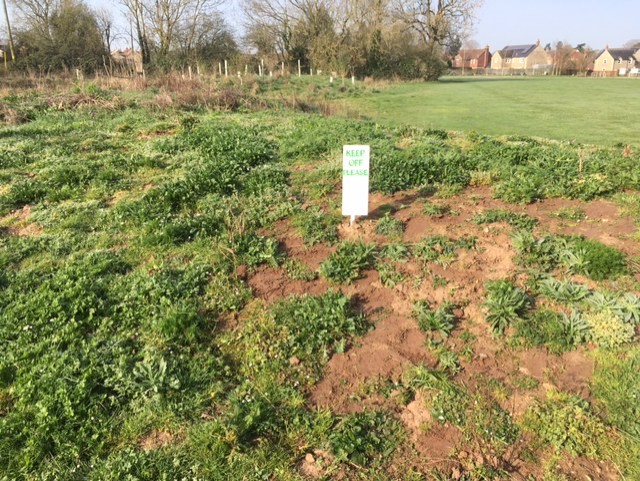 New bee bank (extending the original butterfly bank) in March 2021 (photo: Phil Stone)
New bee bank (extending the original butterfly bank) in March 2021 (photo: Phil Stone)
To my delight, the surface of the huge bank is now pretty much covered in greenery. Some plants from the next-door bank (the original butterfly bank) I can identify; others are definitely progeny from the first bee bank by the pond and also wild flowers from other areas of the woodland. Some may be volunteers from elsewhere. Part of the plan was to provide as many nectar-rich plants as possible, especially in spring, so Primroses and Symphytum (Comfrey) are now growing there.
I noticed an area of activity around a rather bare patch where about a dozen small bees were cruising over the surface. I suspected they were mining bees prospecting for a nest site or, even more excitingly, they were bees that were already occupying the site. Some were honey-bee sized and even similar to a honey bee in colouring; some were much smaller and much darker.
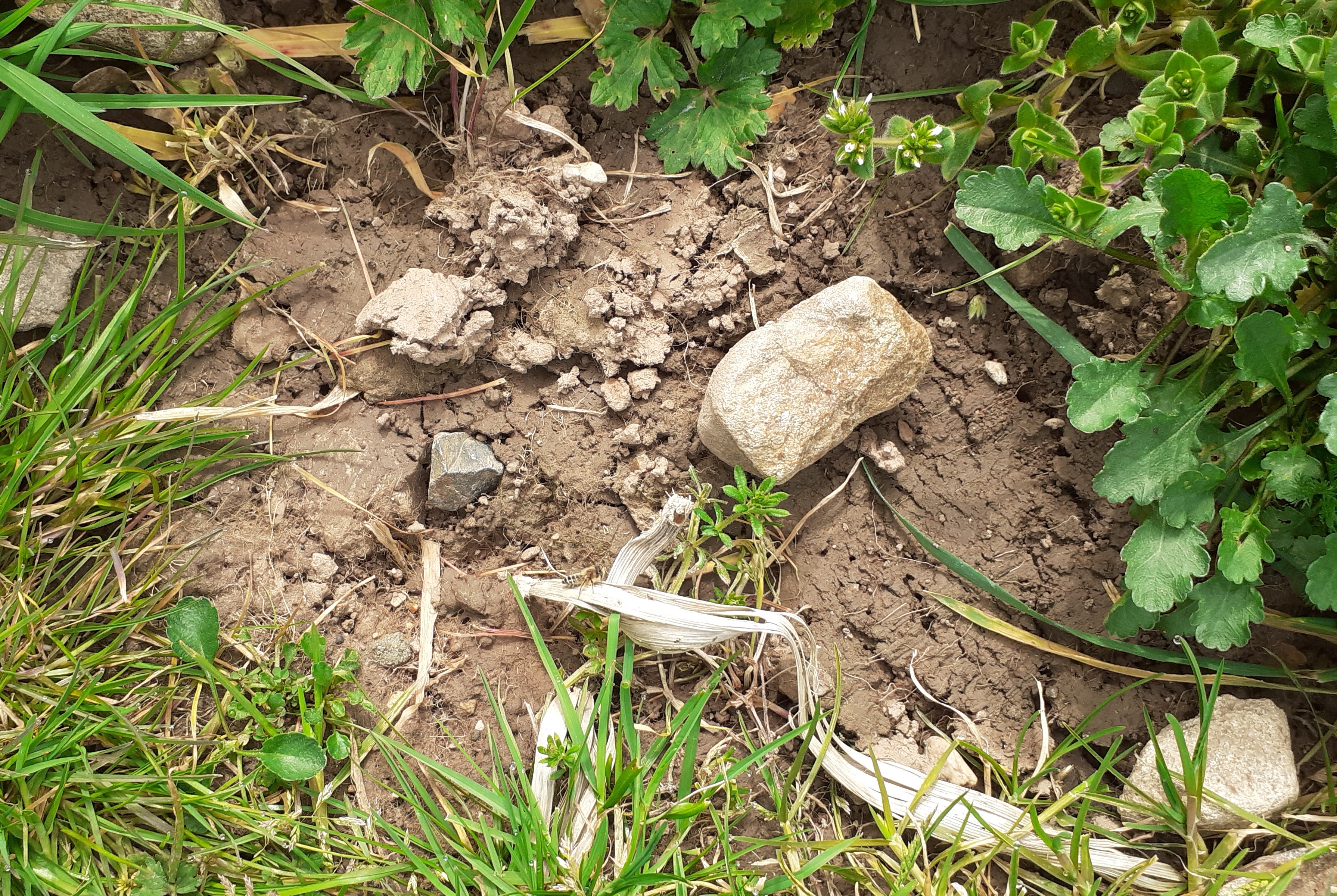 Bare patch on the bank over which mining bees were seen (photo: Liz Gibbs)
Bare patch on the bank over which mining bees were seen (photo: Liz Gibbs)
There are numerous different mining bees, up to 50, I think, mostly unknown to me. I didn’t have my specimen pots or specialist reference book with me and so I had to content myself with photos. I’m pretty sure that there were both male and female versions of the Chocolate Mining Bee or Andrena scotica. Very suitable for the Easter weekend! The female is shown in the photo, and the males are smaller, darker and altogether daintier versions.
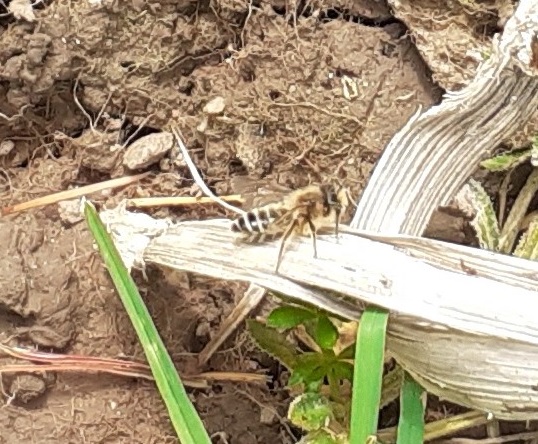 Female Chocolate Mining Bee (photo: Liz Gibbs)
Female Chocolate Mining Bee (photo: Liz Gibbs)
They produce a single generation which favour the flowers of blackthorn, fruit trees and willows, all of which are currently in flower at the Community Woodland. Nesting can occur in loose aggregations on sunlit banks and slopes, and that is exactly what I saw. They also appear to be common in this part of Britain.
Now, with frost and biting winds again, they are harder to find, so further investigation will have to wait …. but if there is a still, warm day, go and see if you can spot them!
BEE BANK BY THE POND
The re-excavation of the pond at the Community Woodland in the autumn of 2018 gave us a pile of spoil alongside the pond with which we could create a new bank for flowering plants for visiting bees, butterflies and other pollinators. After landscaping the spoil and working it to a fine tilth, we planted it up with plug plants especially suited to bees and butterflies and decided to call it our 'bee bank'.
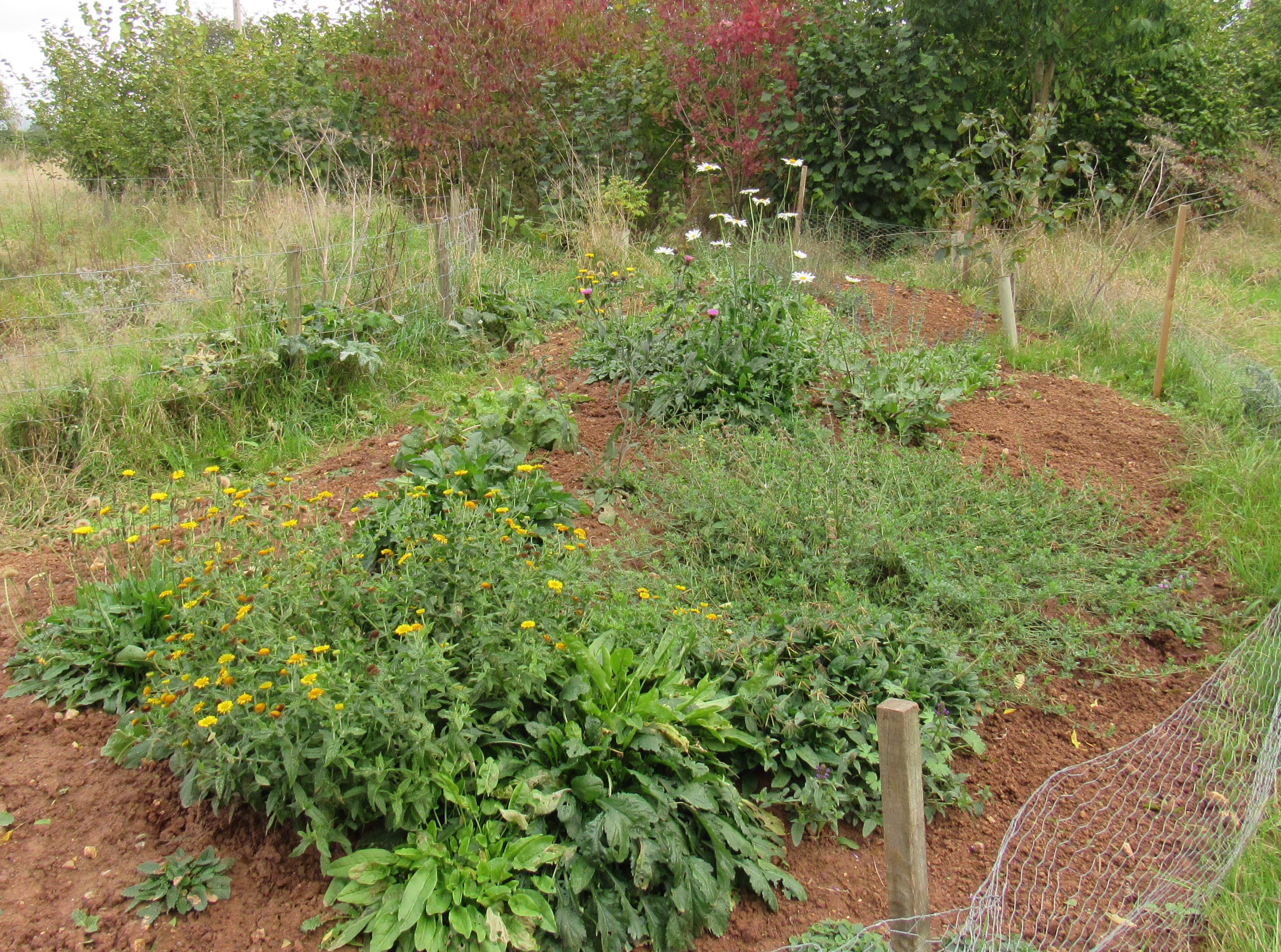 The pond bee bank in October 2019
The pond bee bank in October 2019
We decided to use plug plants because we had been disappointed with the meadow seed mix we had used on the back of the butterfly bank, where plantain originally dominated, and felt we could have more control over the choice of plants and where they were positioned. We bought two packs of 100 plug plants each, one especially designed for bees and one for butterflies, using our National Lottery Community Fund award.
The ‘bee selection’ included: Agrimony, Betony, Bird’s-foot Trefoil, Cowslip, Dropwort, Foxglove, Harebell, Nettle-leaved Bellflower, Rock Rose, Rough Hawkbit, Selfheal, Teasel and Thyme.
The ‘butterfly selection’ included: Basil, Bird’s-foot Trefoil, Cambridge Milk Parsley, Coltsfoot, Fleabane, Lady’s Bedstraw, Lesser Knapweed, Marjoram, Oxeye Daisy, Small Teasel, Sorrel, Vervain and Wild Clary.
The ensuing heatwave in July was a challenge for the young plants. Fortunately, rain followed in August and the plants put on good growth and began to flower. It was very pleasing in mid August to see several Common Blue, Brown Argus and Small Skipper butterflies on the small patch of flowering Bird’s-foot Trefoil, as well as Red-tailed Bumblebees.
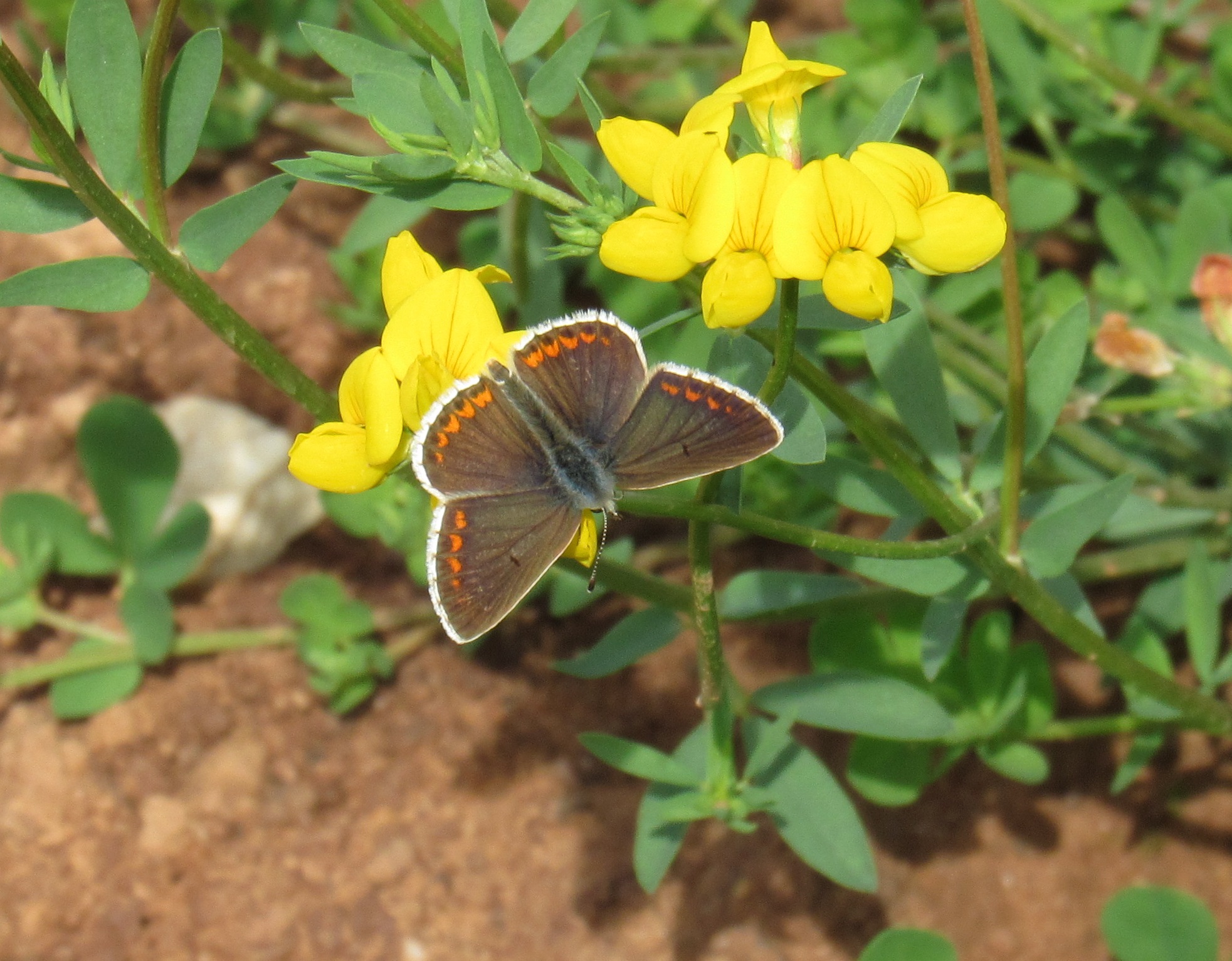
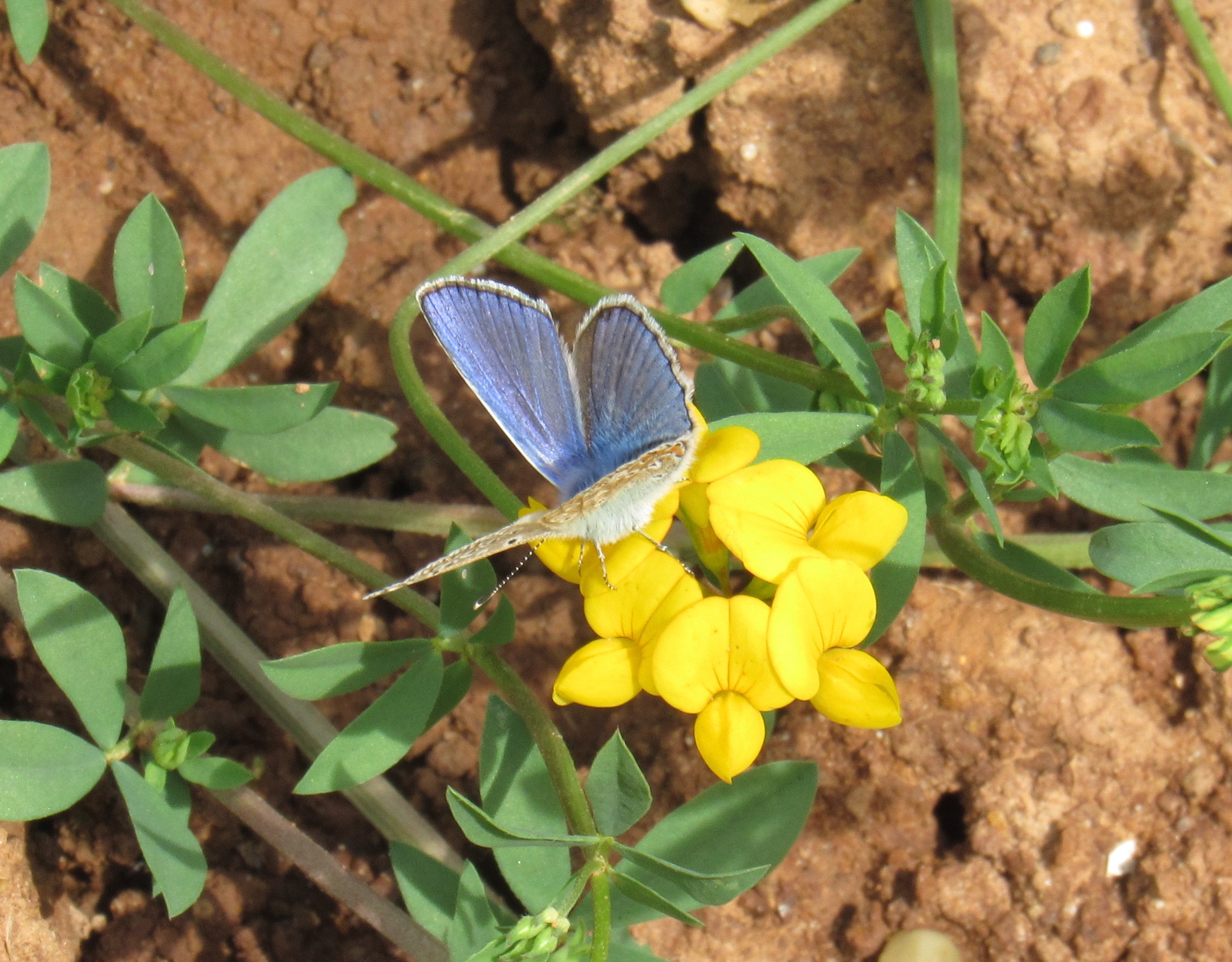
Brown Argus male (left) and Common Blue male (right) on the bee bank